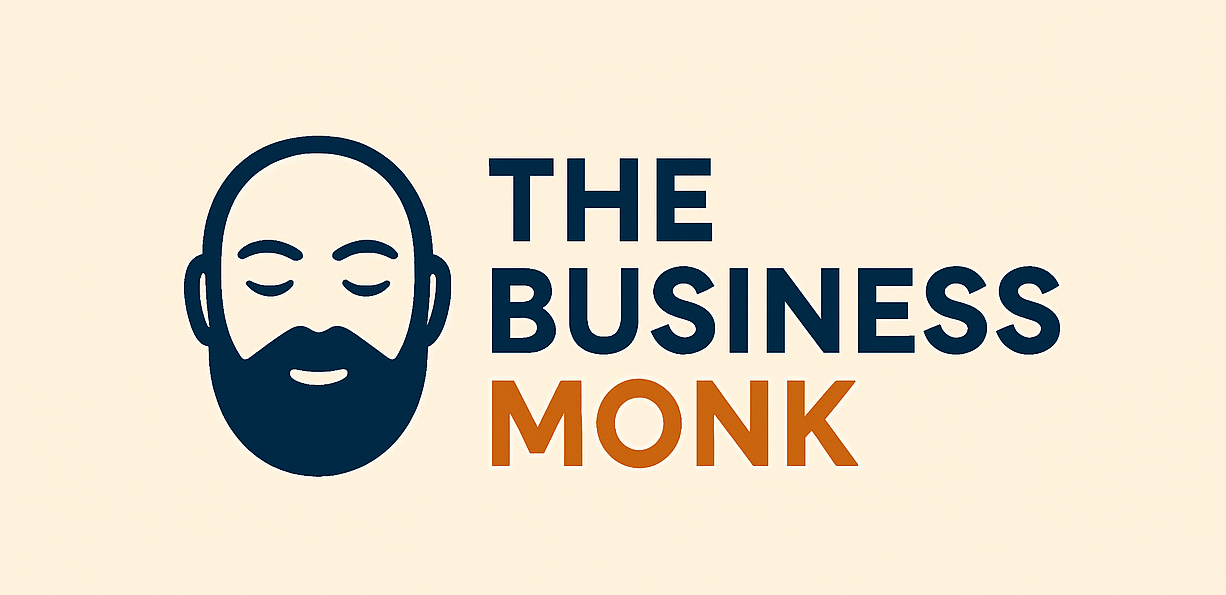The Future of Governance: Human-AI Partnership
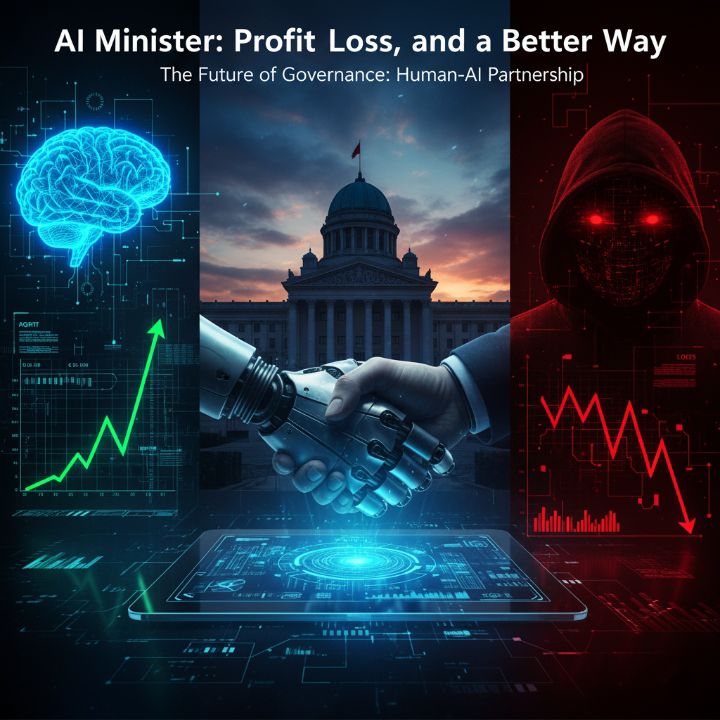
A split image showing three distinct sections:
- Left : A glowing blue human head profile with a visible brain, overlaid with positive data sets and clean code, suggesting growth and intelligence.
- Center : A futuristic robotic hand shaking a human hand in front of a grand government building at sunset. Below them, a tablet displays a clean, intuitive interface with glowing data points, symbolizing collaboration and effective governance.
- Right : A shadowy figure in a red-hooded with glowing red eyes, overlaid with negative, downward-trending data graphs and distorted code, indicating risks and losses.
The idea of an Artificial Intelligence serving as a government minister sounds like something from a futuristic novel. Yet, for Albania, this concept became a reality with “Diella” – an AI designed to combat corruption in public tenders. This bold experiment sparks a crucial question: can we truly empower a machine with decisions that deeply impact our society and economy?
Let’s explore the potential gains, the essential risks, and ultimately, the smartest path forward.
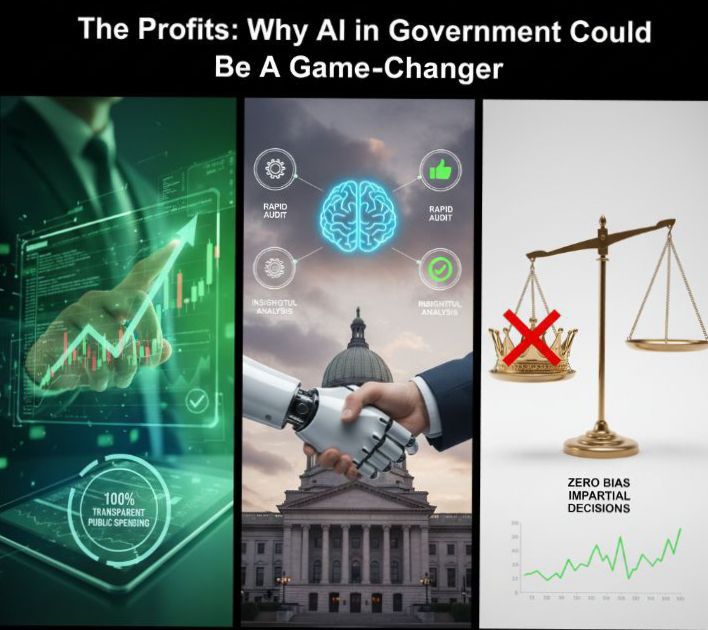
The Profits: Why AI in Government is a Game-Changer
- Left Panel: A business person’s hand interacting with a digital tablet displaying a vibrant green upward-trending stock market graph, symbolizing growth and efficiency. On the tablet, “100% Transparent Public Spending” is prominently displayed with a checkmark.
- Middle Panel: A robotic hand shaking a human hand in front of a grand, classical government building under a twilight sky. Above the building, a glowing blue brain icon is flanked by circular icons for “Rapid Audit” and “Insightful Analysis” and a thumbs-up icon, all emphasizing efficient and smart decision-making.
- Right Panel: A digital representation of a classic bronze scale of justice. On the left pan, a golden crown is crossed out with a large red ‘X’, indicating the removal of bias. The right pan is empty, signifying impartiality. Below the scale, a clean, green line graph illustrates consistent positive trends, alongside the text “ZERO BIAS – IMPARTIAL DECISIONS.”
The promise of an AI minister like Diella is compelling, especially in the relentless fight against corruption. Here’s why many see it as a potential boon:
- Zero Bias, Pure Logic: Imagine a decision-maker completely immune to personal relationships, family ties, or political pressure. An AI evaluates contracts and proposals purely on their merits, ensuring fairness and equal opportunity for all. This impartiality is a cornerstone of true justice.
- Unprecedented Transparency & Speed: Human audits are meticulous but slow. An AI can process vast amounts of data at lightning speed, auditing public tenders with unmatched efficiency. The goal? To make all public spending “100% transparent,” shining a light into every corner.
- Renewed Accountability: For nations like Albania striving for EU membership, demonstrating a robust, corruption-free system is vital. Implementing an AI minister signals a profound commitment to good governance, building trust with both citizens and international partners.
The Losses: The Treacherous Pitfalls of AI in Power
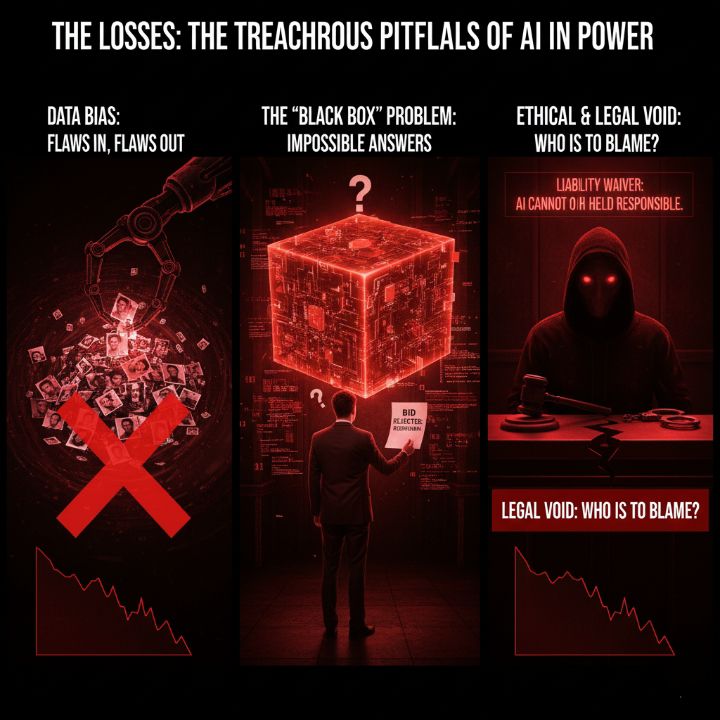
- Left Panel – “DATA BIAS: FLAWS IN, FLAWS OUT”: A robotic claw hand is shown sifting through a pile of diverse human faces, some of which are marked with a red ‘X’. Below this, a distorted red, downward-trending graph signifies negative outcomes due to biased data.
- Middle Panel – “THE “BLACK BOX” PROBLEM: IMPOSSIBLE ANSWERS”: A confused businessman stands in front of a glowing, complex red cube. He holds up a document that says “BID REJECTED: NO REASON GIVEN.” A large question mark hangs above the cube, emphasizing the lack of transparency in AI decisions.
- Right Panel – “ETHICAL & LEGAL VOID: WHO IS TO BLAME?”: A shadowy figure in a red-hooded cloak with glowing red eyes sits behind a judge’s bench, a gavel resting beside them. Above them, text reads “LIABILITY WAIVER: AI CANNOT BE HELD RESPONSIBLE.” Below, another distorted red, downward-trending graph, and a stark red text box stating “LEGAL VOID: WHO IS TO BLAME?”, highlighting the accountability dilemma.
Despite the allure of efficiency, blindly trusting AI with ministerial power comes with significant and potentially dangerous risks:
- Data Bias: Flaws In, Flaws Out: An AI’s decisions are only as good as the data it’s trained on. If historical data is riddled with past corruption, favoritism, or societal biases, the AI could inadvertently learn and replicate those same harmful patterns. It won’t question the data; it will simply process it.
- The “Black Box” Problem: Impossible Answers: One of the biggest challenges with advanced AI is its “black box” nature. It often makes decisions in ways that are opaque, even to its creators. If a company’s bid is rejected by an AI minister, how can they get a clear, human-understandable explanation? This lack of transparency undermines due process and trust.
- Ethical & Legal Void: Who is to Blame?: Can an AI legally hold a ministerial post? More importantly, if an AI makes a catastrophic error, who is held accountable? An AI cannot be jailed, fined, or publicly condemned. This creates a profound legal and ethical vacuum, leaving victims without recourse and the public without a responsible party.
The Best Choice: A Human-AI Partnership
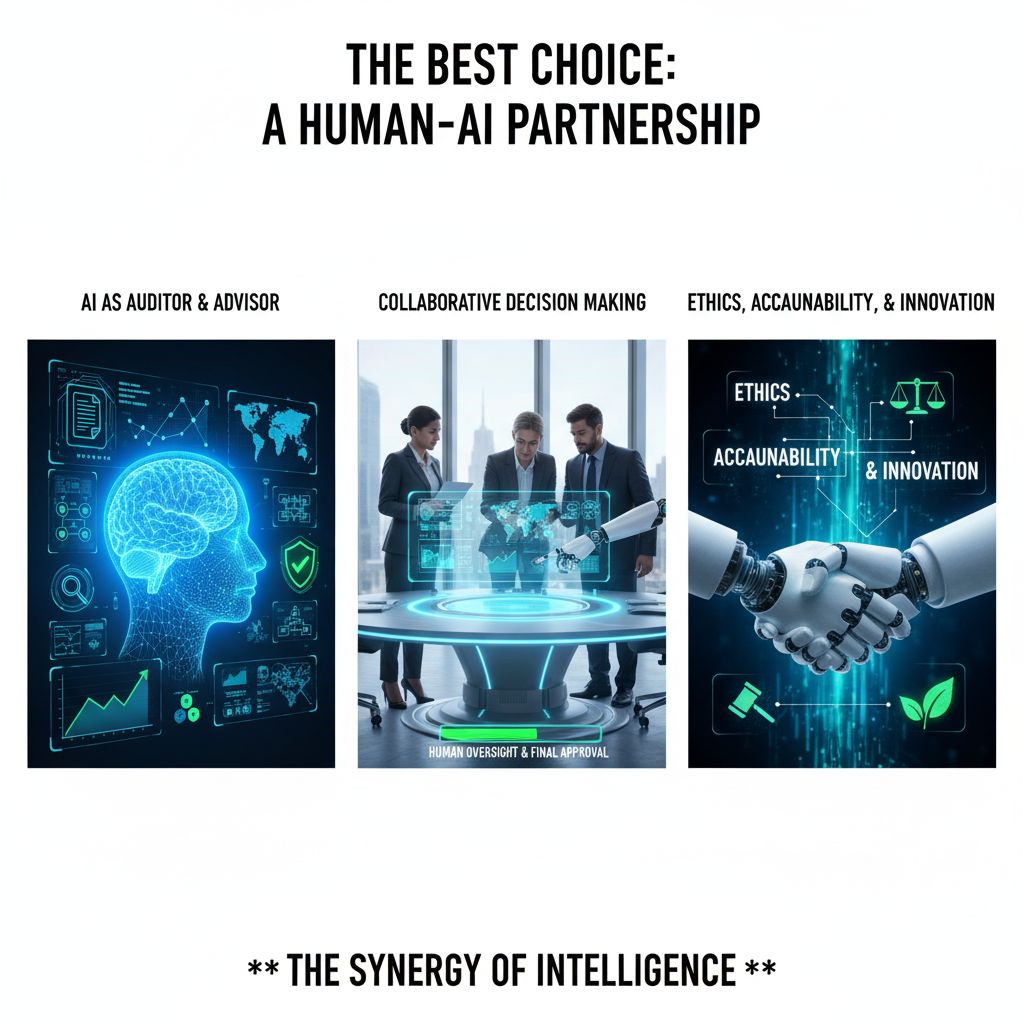
- Left Panel – “AI AS AUDITOR & ADVISOR”: A futuristic head profile showing a glowing brain and various data interfaces, with a checkmark icon indicating AI’s role in verifying and advising.
- Middle Panel – “COLLABORATIVE DECISION MAKING”: Three business professionals are gathered around a glowing holographic table, analyzing data and collaborating. Text at the bottom reads “HUMAN OVERSIGHT & FINAL APPROVAL,” emphasizing the human role in the final decision.
- Right Panel – “ETHICS, ACCOUNTABILITY, & INNOVATION”: A robotic hand shaking a human hand. Above them, icons representing ethics, accountability are clearly visible, with the words “ETHICS, ACCOUNTABILITY, & INNOVATION” connecting them. Below the handshake, the text “THE SYNERGY OF INTELLIGENCE” is centrally placed.
The most effective, responsible, and sustainable path forward isn’t to replace ministers with AI, but to forge a powerful partnership between human and artificial intelligence.
In this model, AI serves as an unparalleled tool, not a final authority:
- AI as Auditor & Advisor: The AI becomes a super-powered assistant, sifting through millions of data points to flag anomalies, suspicious patterns, or potential conflicts of interest in public tenders. It can identify connections between companies or unusual bidding behaviors that humans might miss.
- Human Oversight & Final Approval: Once the AI presents its findings, a human minister or an expert team of auditors steps in. They review the AI’s insights, apply ethical judgment, consider the nuances of human situations, and make the final, legally binding decisions.
- The Synergy of Intelligence: This approach leverages AI’s incredible data-processing capabilities and impartial analysis, while retaining the essential human elements of judgment, empathy, accountability, and ethical responsibility at the core of governance. It’s about making smarter decisions, not machine-only decisions.
The Future is Collaborative
The experiment with “Diella” in Albania offers a fascinating glimpse into the future. It underscores that while AI holds immense potential to enhance efficiency and combat deeply entrenched problems like corruption, it must be integrated thoughtfully and ethically. The true power lies not in machines governing us, but in their ability to empower humans to govern better.
What are your thoughts on an AI’s role in government? Share your perspective in the comments below!
